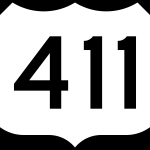Blog:
New JA Feature: Tweets for Keeps
 Twitter Essentials
Twitter Essentials
Social media (mostly Twitter) resources for journalists

Tweets for Keeps is a new resource to help publishers keep even better pace in 2012 with the changes sweeping journalism. By one estimate, last October people tweeted on average 250 million times a day. How many brilliant ideas, helpful resources, and interesting articles crossed your screen when you couldn’t look? Could you find them later? Perhaps you wanted to look at them again, only to find they’d disappeared after a week’s time.
Tweets for Keeps is our way of increasing the shelf life of tweets that rise to the top of our list week to week, creating a resource for you to turn the power of Twitter into a power tool for your work. Tweets for Keeps lets you come back and see what surfaced each week, when it’s convenient for you.
Part of harnessing the potential of new tools is understanding their language. Fluency frees publishers to use tools like Twitter for maximum yield. Many people know a lot of the Twitter code explained below, but many don’t, and all the symbols and shortcuts can be very alienating! As newspapers fade as the prime distribution model for news, Twitter has quickly taken its place at the table as incredible new form to both post your content around breaking news and to learn how to sharpen your competitive edge. Understanding well how any new tool works empowers you to chose which mix of social tools will best help you up your game.
Plug “Tweets for Keeps” into our site search, and you’ll turn up an archive of tweets worth referring back to after they first flew by. Find useful tools, tactics, articles and ideas to help you experiment, innovate and collaborate. You vote up the tweets to keep with your retweets and favorites. The final selections week to week in Tweets for Keeps are collaboratively hand-picked by our social media strategist and editorial director. For context, we top off the Tweets for Keeps digest with a brief summary of what was going on that week outside the Twitterverse. As you refer back to fleeting messages, this offers an anchor in time, especially since searching Twitter is limited to just tweets within the last seven days. (It will also be a great place to start next December, when you’re writing reflections 2012!)

Stats thanks to Jeff Bullas' post: 20 Stunning Social Media Statistics Plus Infographic (click image for more)
Here is a brief overview of the JA Tweets for Keeps slicing guide – designed to surface content that may be useful to you.
- Tips & Techniques highlights craft focused content, fellowships, funding, scholarships, trainings and webinars.
- Tools & Tactics features ways to up production, apply new tools or see smart methods others are using to deliver great work.
- Innovation & Experiments showcases emerging trends, entrepreneurial ideas and startup news.
- Articles & Reports surfaces research, reporting and fresh analysis to keep you front-of-field.
- People & Collaboration tracks the evolving field of news, new partnerships and examples of publishing communities working together to inform their readers in fresh and sustainable ways.
If you’re deep into Twitter, and want to better analyze, manage, track and strategize, check out this helpful guide. Or – if you’ve found tweeting to be a lonely experience, you might enjoy this reflection on making Twitter connections.
If you’re new to the Twitterverse, here is one tweet deconstructed to ease you into the lingo.
RT @andrewhaeg @dnbornstein: #Journalism is a feedback mechanism to help society self-correct. nyti.ms/tE9U8N — AccelerateJournalism (@journaccel) December 27, 2011
RT: A RT is a retweet, when someone finds your post valuable and shares it with their network of Twitter followers by clicking the retweet button on the Twitter interface.
@andrewhaeg, @dnbornstein: The @ defines a specific Twitter account. If you click on the @ account, it will bring you to that Twitter profile. People see tweets that mention them this way. Here’s a neat nugget: If you start a tweet with @ the only the person who owns that account and people who follow that account will see the message. Your own followers will not (unless they also follow the person you’re @mentioning). In order make sure your @ mentions aren’t invisible to your followers, you need to put the @ symbol somewhere besides the beginning of the tweet. Putting a period before the @ symbol is the simplest way to do this.
#Journalism: Called a “hashtag,” the # symbol delineates keywords designated by the Twitter community to unify people around a certain conversation. If you click on the #hashtag, it will show you a stream of all other tweets that include that particular hashtag phrase. You can search Twitter for hastags already in use. New ones pop up all the time in response to events. You’ll create one when you organize a real-time conversation on Twitter.
Here are more tips about helpful hashtags for journalists. Please add your favorites! There are many more shortcuts to use Twitter well. See Twitter’s own glossary of the world it’s created.
We at the JA would be delighted to help you think of new ways you might get the most out of Twitter. Please, refer to our resources, peruse our tweet stream, and DM us with any queries, recommendations, or suggestions about how we can better filter the tweets we keep to help source your work. What tweets do YOU want to keep?










Weigh In: Remember to refresh often to see latest comments!
1 comment so far.
This is a cool use of the Twitter embed function.